With decades of experience leading human resources teams at companies like Time Warner and BlackRock, Jeff Smith has had a front-row seat to the evolution of HR. While every company is different, Smith explains that the through line in successful companies is a clear understanding of collaborative styles, a free flow of ideas and communication, and a willingness to put shared organizational goals ahead of ego.
“Everyone has to figure out their roles while also dealing with and respecting each other's personalities, opinions, and how they do things,” says Smith. “That can be hard. Many teams fail because of egos, politics, and a lot of posturing that’s not part of what helps the goal of a group or organization.”
For Smith, HR success comes down to balancing the goals of a business with a shared recognition of the people that make those goals achievable. He emphasizes the importance of keeping this balance in mind as HR teams implement major changes.
Reimagining Remote Work
Remote work, once a niche or temporary solution for many organizations, has cemented its place as a permanent fixture in the professional landscape since the COVID-19 pandemic. A recent Gartner survey found that 82% of company leaders plan to allow employees to work remotely at least some of the time. This transition necessitates a reevaluation of traditional HR strategies to ensure remote employees remain engaged, productive, and connected to the company's culture.
“Balancing the expectations of employees created by COVID and the remote work environment with a lot of CEOs’ desires for people to be in-person will continue to be one of the biggest human resources challenges going forward,” notes Jeff Smith.
While remote work offers advantages such as reduced commuting time and more childcare availability, it can be difficult to foster a sense of connection and belonging among remote employees. A 2019 study published in the Journal of Business and Psychology found that workers with jobs that are complex and not collaboration-based tend to improve productivity with remote options. At the same time, a 2022 study in the European Journal of Work and Organizational Psychology found that remote workers often feel isolated, which can impact their engagement and productivity.
HR professionals are tasked with creating strategies that bridge these gaps, leveraging technology to facilitate better communication while considering workplace strategies that foster a sense of community among dispersed teams.
With the shift to remote work, there's a heightened focus on continuous learning and development. LinkedIn’s 2021 Workplace Learning Report found that 64% of learning and development professionals agreed that L&D shifted from a "nice to have" to a "need to have" in 2020. HR leaders are now prioritizing the creation of accessible online learning platforms that empower employees to take the initiative to advance their skills and performance, which is crucial for career development and job satisfaction in a remote environment.
“I think flexibility is important. It shows trust and allows people to be able to prioritize things in their life in a way that makes most people feel good,” says Smith. “The No. 1 thing in all of this is getting the job done and being a strong performer. I’ve seen that people are much more flexible with folks who get their job done than with those who are struggling. It’s very hard to give flexibility and time off when someone is not doing what is expected of them. Ideally, managers and organizations can be outcome-focused more than place-focused in terms of where work is done.”
The Rise of Employee Well-Being Programs
Employee well-being has transitioned from a peripheral HR concern to a central strategy for enhancing productivity and retaining talent. The American Psychological Association’s 2021 Work and Well-Being Survey found that approximately 59% of employees surveyed had felt the adverse effects of job-induced stress within the last month, with 26% reporting diminished interest, motivation, or energy, 21% citing challenges in maintaining focus, and 19% claiming reduced effort in their job performance.
However, the report found that employees who felt their employer cared about their well-being were more likely to be engaged, satisfied, and remain with their employer over time. This trend has prompted HR professionals to develop comprehensive well-being programs that address not just physical health, but mental and emotional well-being, too.
The pandemic amplified the focus on mental health in the workplace. HR leaders are implementing programs that provide employees with resources and support for mental health challenges. This includes access to counseling services, mental health days, and training for managers to recognize and address mental health issues among their teams.
“COVID increased stress and the focus on mental health, as well as support for mental health and well-being, and this effort remains more and more critical as time goes on,” observes Jeff Smith.
Harnessing the Power of Data in HR
Data analytics is playing an increasingly vital role in shaping HR strategies. The ability to gather and analyze data related to employee performance, engagement, and satisfaction allows HR leaders to make evidence-based decisions that can improve the overall effectiveness of their HR initiatives.
Predictive analytics is transforming talent acquisition by enabling HR professionals to make more informed decisions about potential hires. By analyzing data on past hiring decisions and employee performance, HR can identify patterns and predictors of success, which can lead to more effective hiring practices.
Tools that measure employee engagement in real-time are providing HR with invaluable insights into the health of their organization's culture. These analytics can highlight areas of concern before they escalate into bigger problems, allowing HR to address them proactively. Companies are now deploying a range of sophisticated tools such as pulse surveys, social listening platforms, and artificial intelligence-driven analytics software.
Pulse surveys offer a quick and effective way to gauge employee sentiment on a regular basis, providing a continuous stream of data on the workforce's mood and engagement levels. Similarly, social listening tools can aggregate and analyze employee feedback from various internal communication channels, identifying trends and topics that are top of mind.
AI-driven analytics, on the other hand, can predict potential turnover by analyzing patterns in employee behavior and engagement. Together, these tools enable HR departments to anticipate employee concerns, crafting targeted interventions that enhance engagement and organizational culture.
Data analytics are also being used to tailor learning and development programs to the needs of employees. Understanding which courses and materials are most effective through analyzing data helps HR departments enhance the return on investment of their L&D initiatives, ensuring employees receive the training that’s most beneficial to their career development.
“It’s critical to have exceptional technology to make processes better and more efficient, for governance and risk management, and to help provide data and insight to make decisions,” says Smith. “The technology landscape has never been more complicated, so it’s not enough to just go with one of the established players without evaluation. It’s critical to evaluate new technologies and make smart strategic decisions to keep up with or get ahead of a rapidly changing environment.”
Jeff Smith’s HR Outlook
The landscape of human resources is undoubtedly undergoing a profound transformation. For Smith, whether it’s evaluating whether to integrate hybrid/remote work into corporate culture, hiring the best talent, or utilizing data to optimize performance, the key to responding to this transformation remains having an intense focus on organizational goals while paying attention to employee needs.









